3Drag printer
The most hackable 3D printer based on RepRap Open Source project
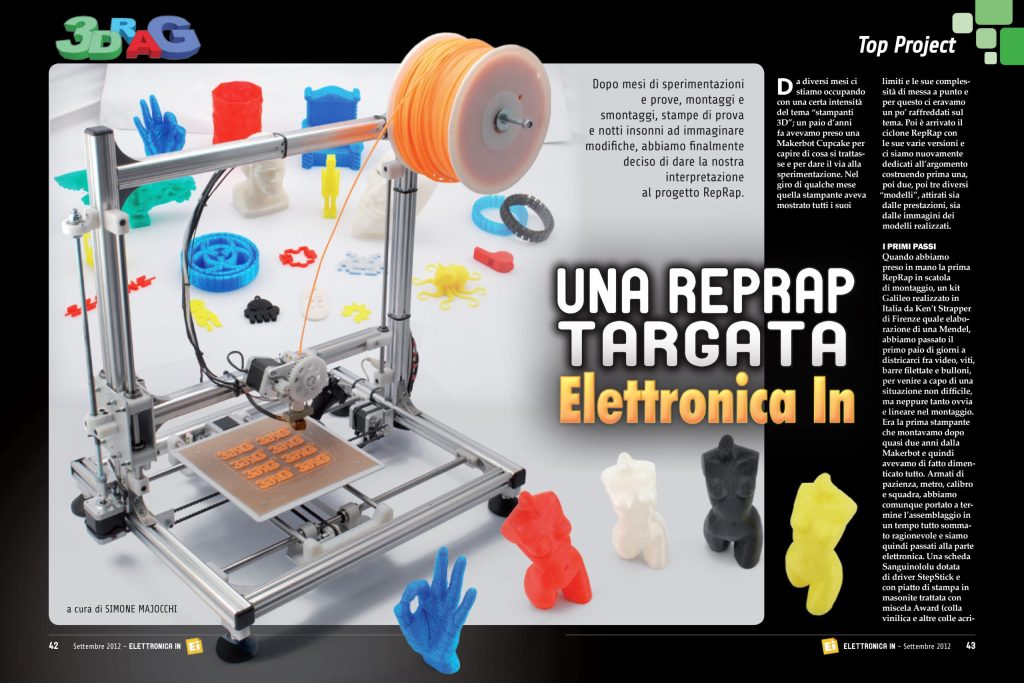
Customer:
Elettronica In
Challenge:
Design a 3D printer based on the RepRap Open Source, suitable for easy assembly and available to 3D printing enthusiasts as a reasonably priced KIT.
Year:
2012
3D printing for all
During 2012 I was working as a contributor to Elettronica In magazine, the stepson of Elettronica 2000 where I started my career as a journalist around 1980. The magazine had an interesting business model where all the relevant projects published had to be offered as Kits.
3D printing was a hot topic and I was in charge of developing something that was an ideal kit, easy to build and with an almost granted outcome as a working machine. I already assembled and improved some RepRap designs, but creating a kit of the standard Mendel Prusa, with a foolproof guide for the assembly turned into a nightmare.
The parts required were a mix of nuts, bolts, washers and many 3D printed parts, plus the electronics. A couple of days were the minimum time required and there were many steps where the size and false symmetry of some parts often led to mistakes that required disassembly at a later stage.
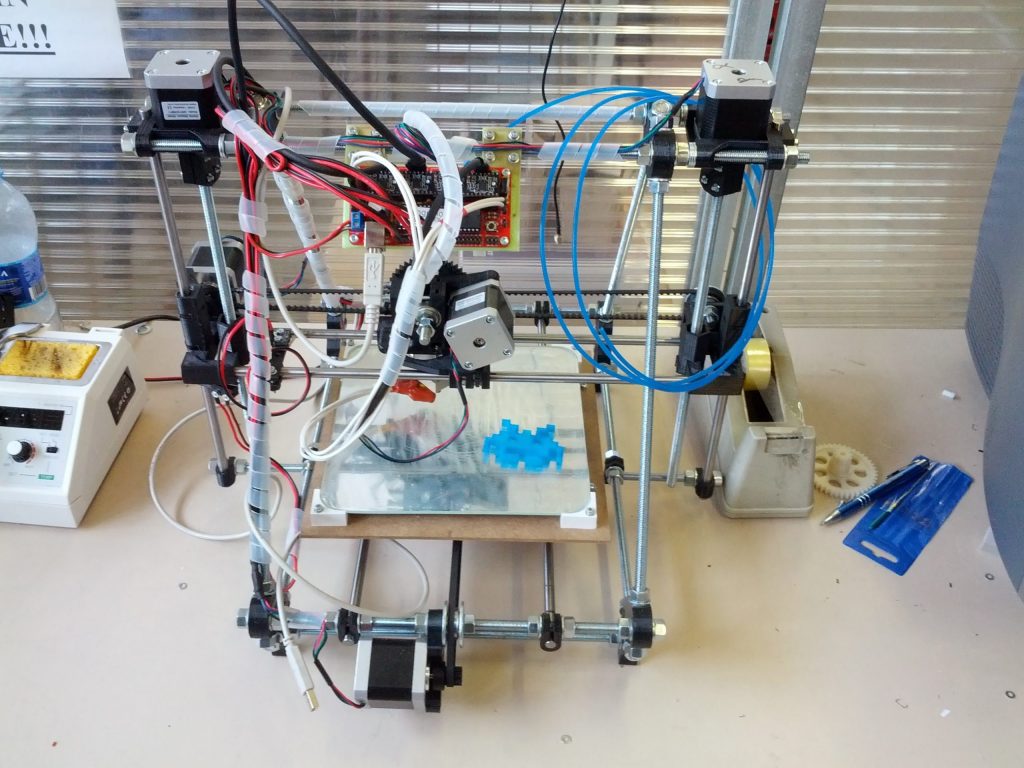
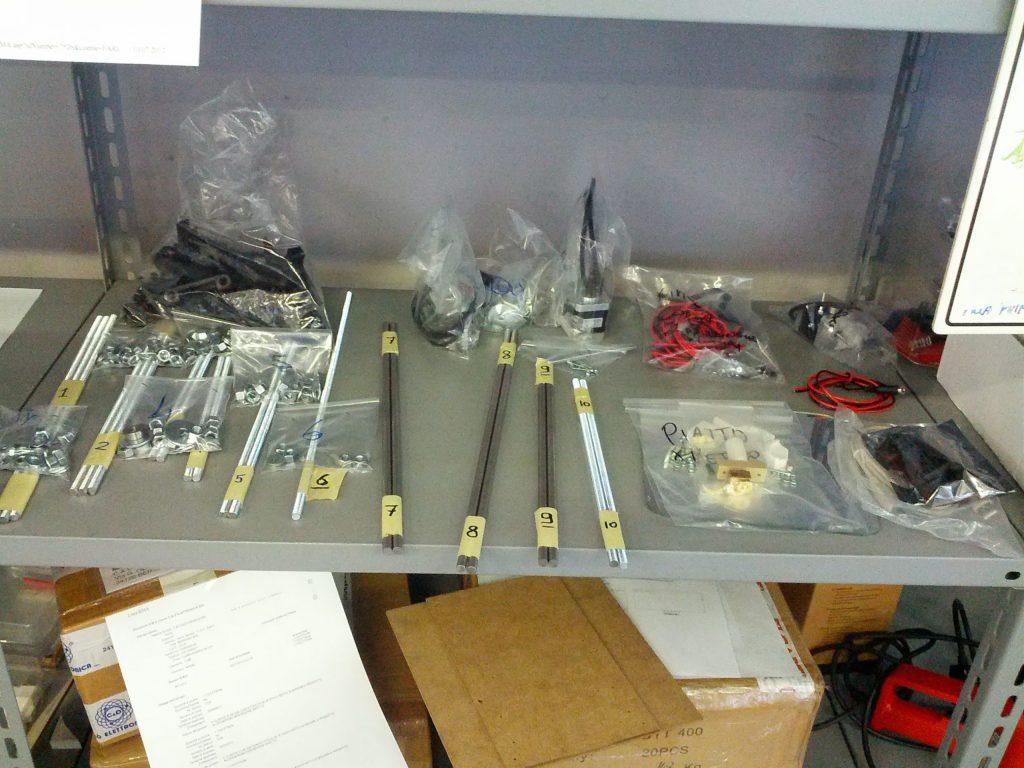
The kit, anyways, was something that readers would appreciate because its cost would be less than the price an individual would pay buying all the hardware in a normal DIY shop.
As you can see in the picture, the parts, bags and pieces were too many to be easily managed without making any mistake due to a part swap. Moreover assembling such a kit would be a challenge for any warehouse.
I teamed with Gabriele Dagetta, the chief designer in the magazine team and we decided to abandon the threaded bars, used by many designs, and switch to aluminium profiles. These profiles were initially patented by Bosch, but the patent was expired and therefore the availability and price were good.
Mendel Prusa was a printer with a build plate moving on the X axis, while the extruder was moving on Y and Z axis. Our choice was for a build plate moving on X and Y while the extruder was on a simple bar that moved on the Z axis.
Another relevant choice was to abandon the 3D-printed parts and use a CNC to manufacture Delrin parts. Still, the design of these parts allowed 3D printing to honor the Open Source spirit of the RepRap project.
The profiles were kept together by standard corners and this made the whole structure stable and perfectly square. Compared to Mendel, the design was cleaner, easy to handle and a breeze to transport.
I spent some time perfecting the extruder: the tip had a specific design with some tricks I learned printing with other machines.
The result was amazing and I printed so many objects with great results in the coming years, playing with different filaments and after 10 years, my 3Drag was still alive and kicking with great performance.
The design included other innovations like the fibreglass PCB used as the build plate: a light sandpaper treatment exposed the glass fibres of the PCB and let the molten PLA grip on them.
Later on, we adopted the Ikea 20×20 cm square mirror, which allowed experiments with different materials like TPU. In 2013 using TPU as filament was really unusual and I can say that I pioneered the flex prints on this category of 3D printers.
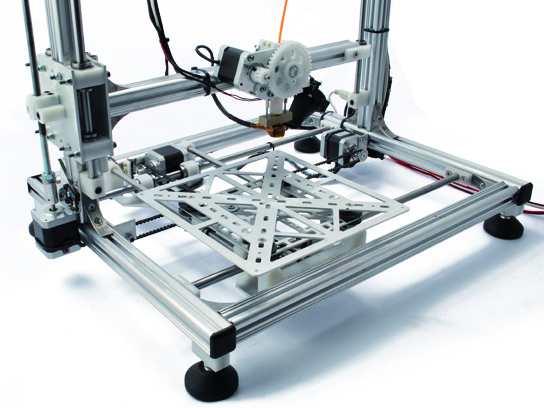
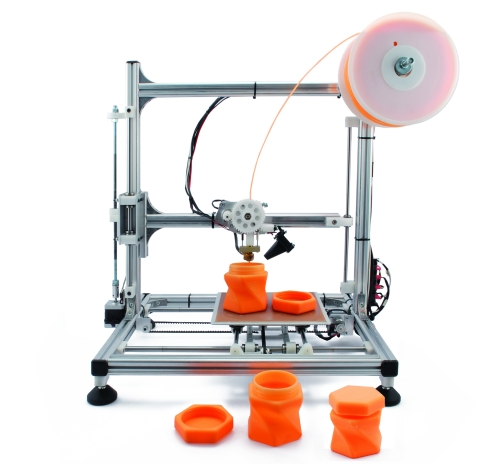
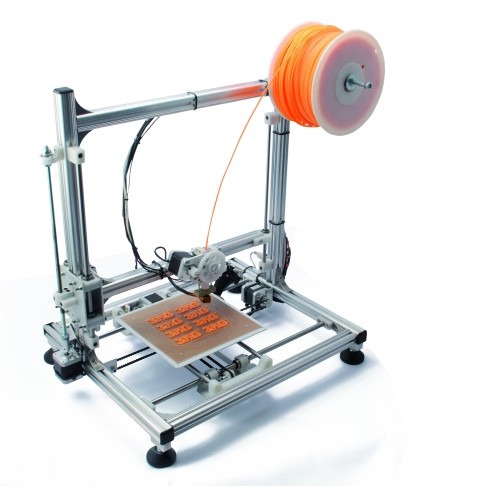
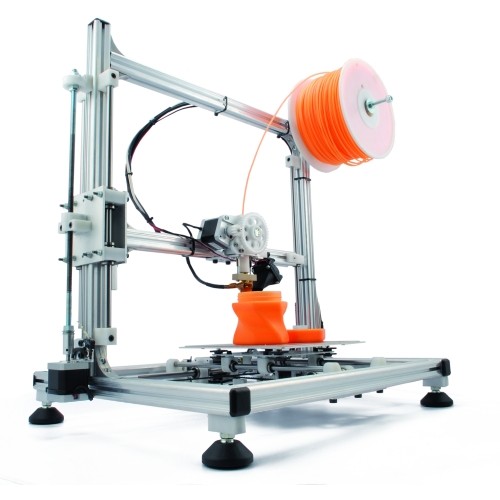
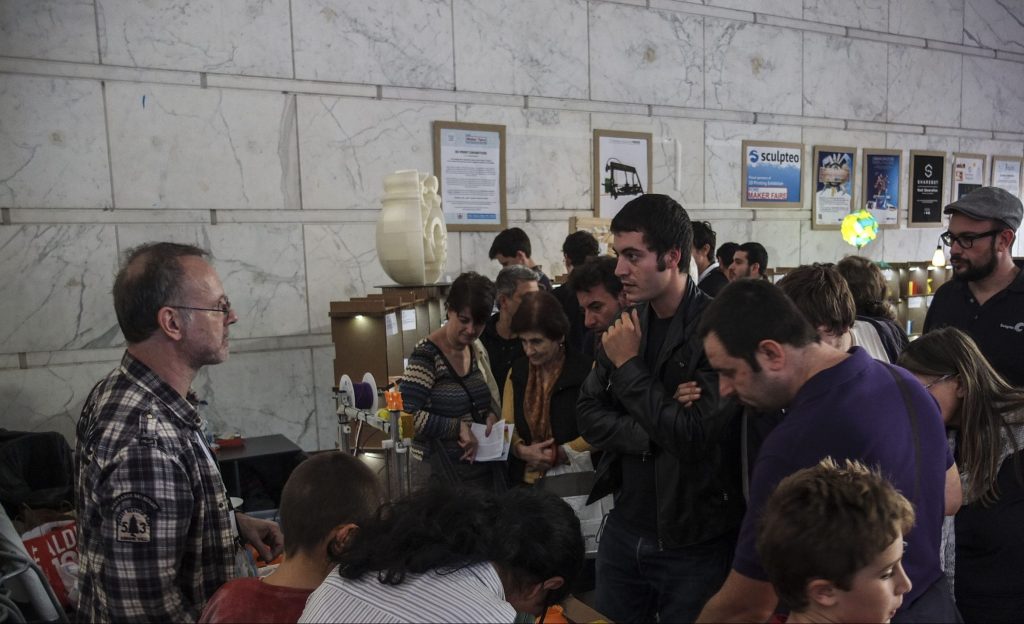
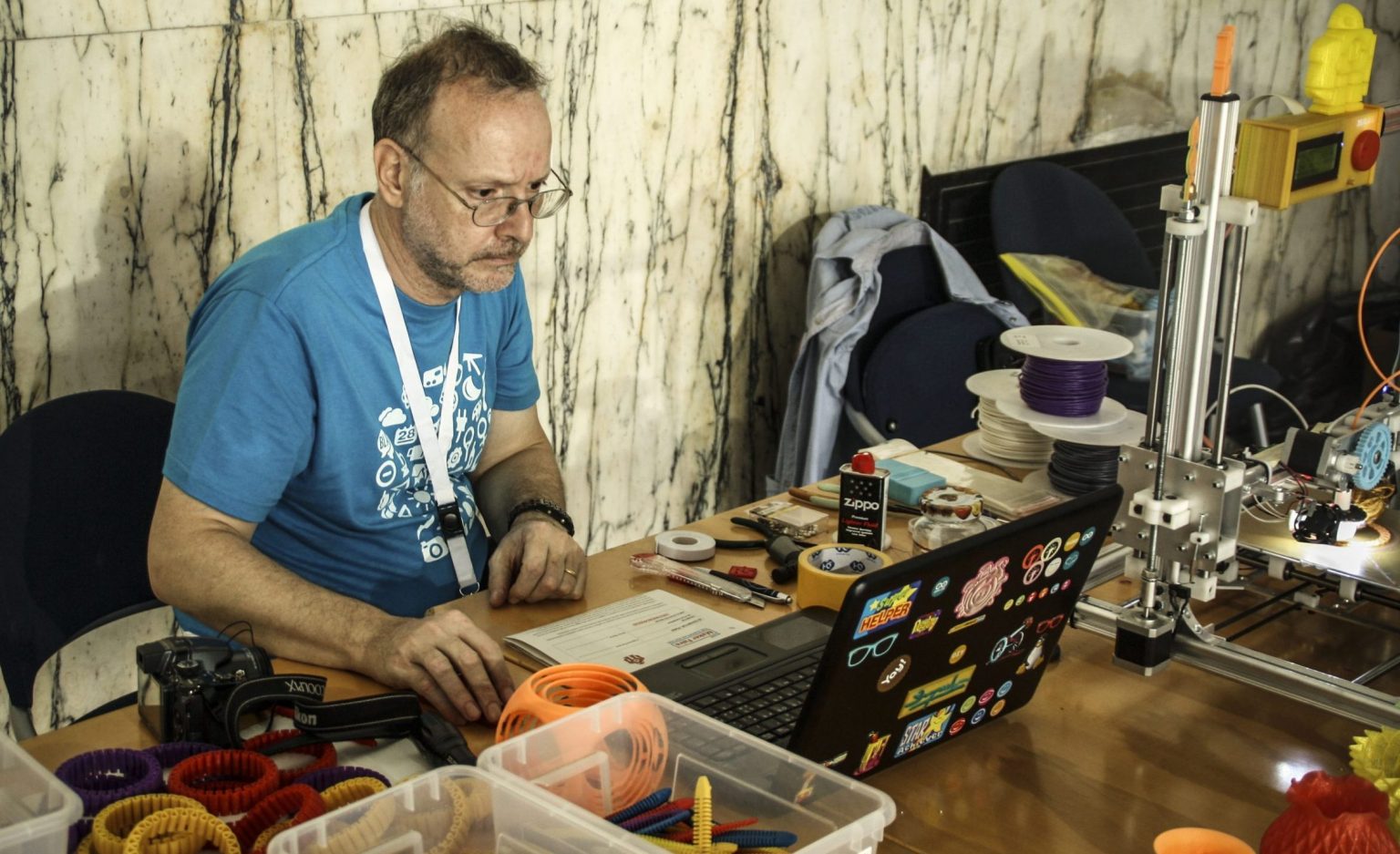
The show stopper
The printer was my companion in many occasions: shows, workshops and even TV shows. I kept it with me as part of any event that was related to 3D printing and even if it wasn’t the most up to date model of 3D printer, it never failed me. The way it was designed, allowed for an easy disassembly of the Z block, making it flat and easy to put in a suitcase; when assembled, the top bar was also the handle to bring it around.
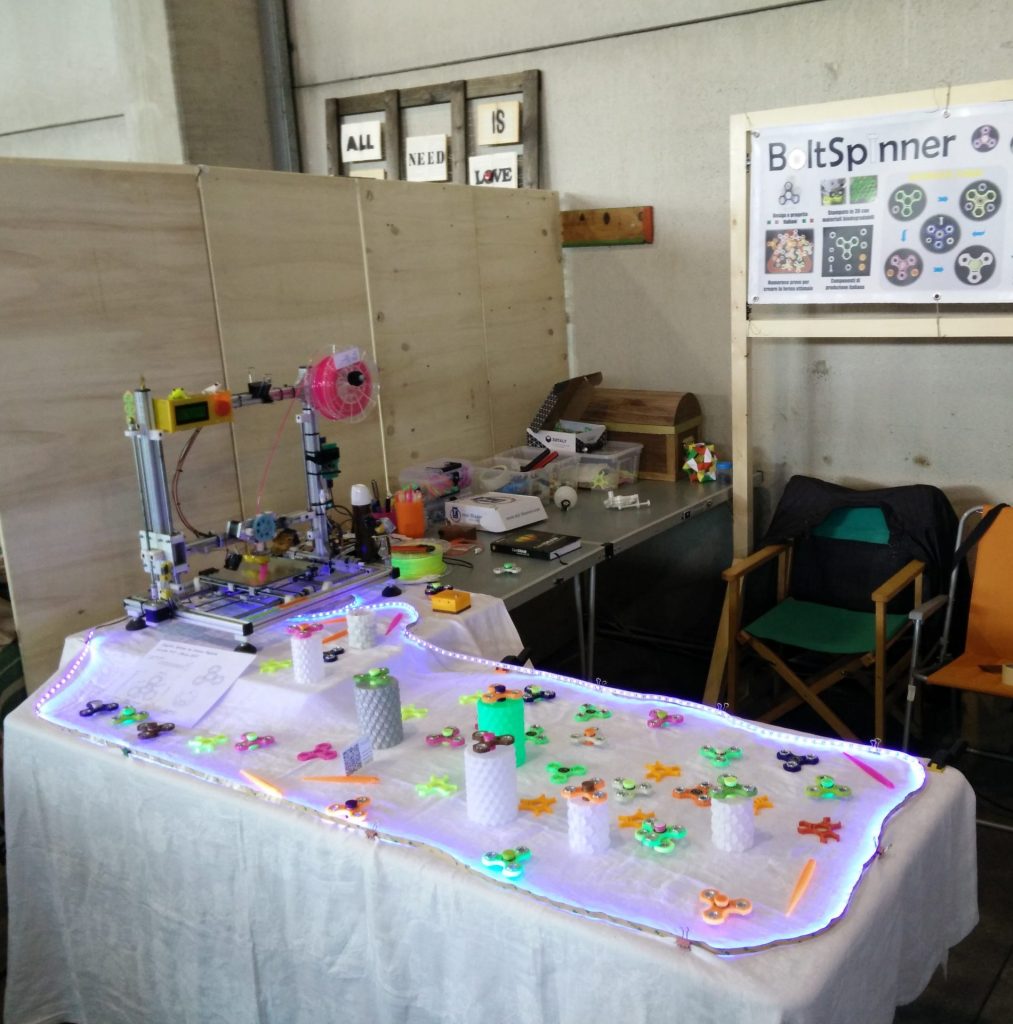
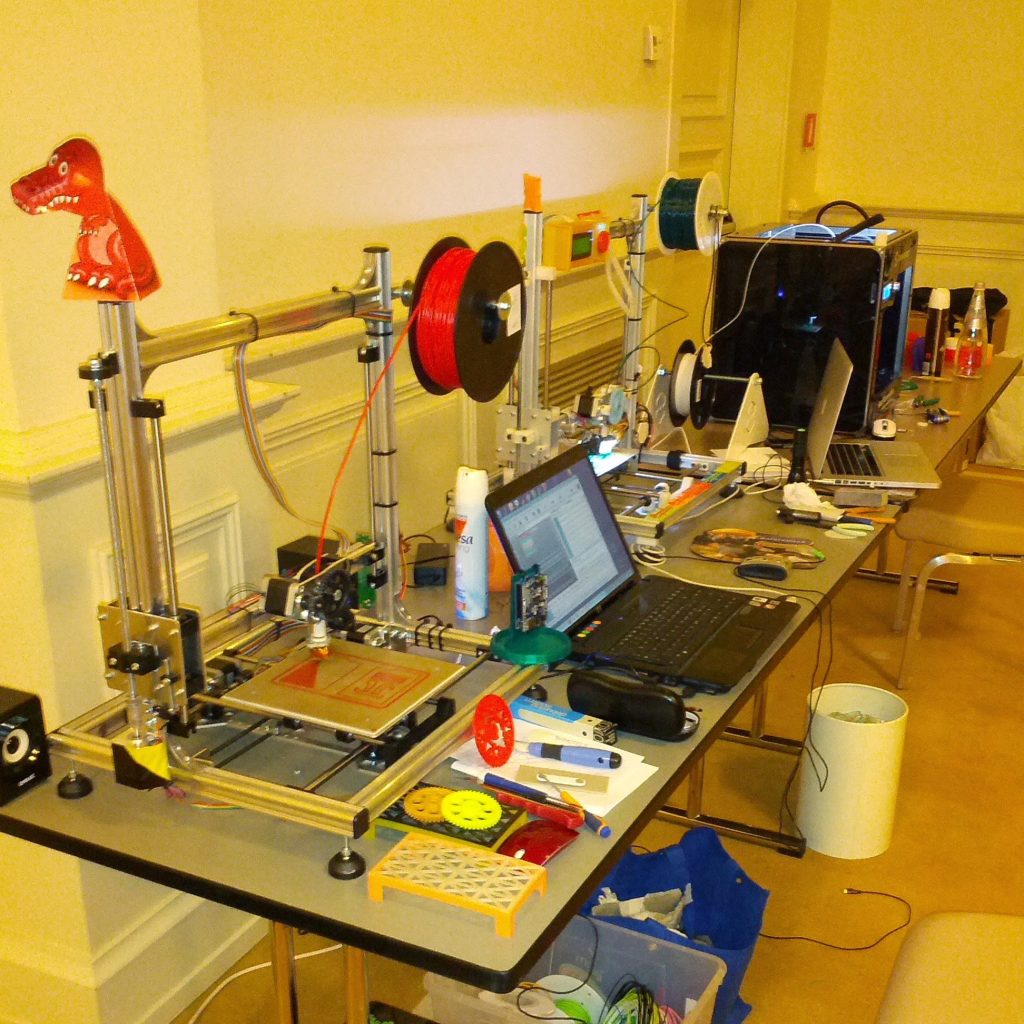
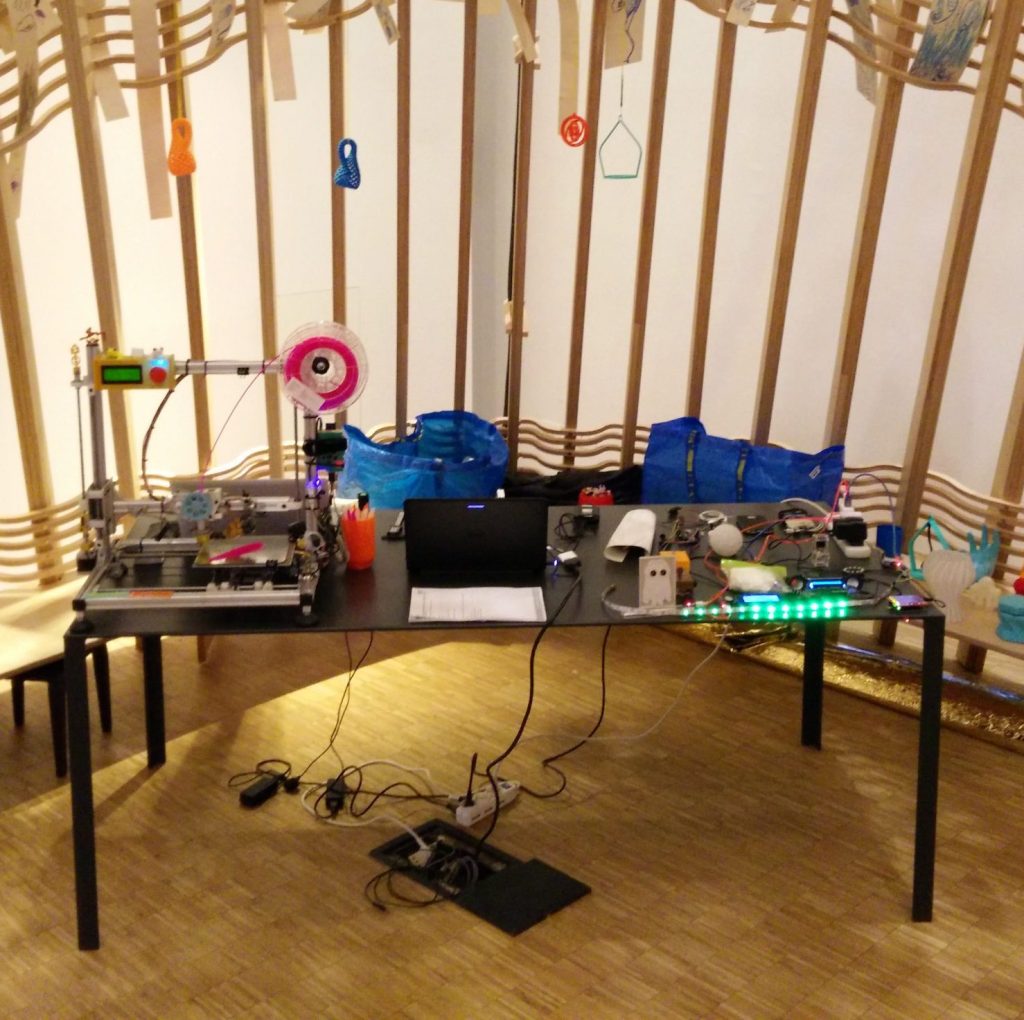
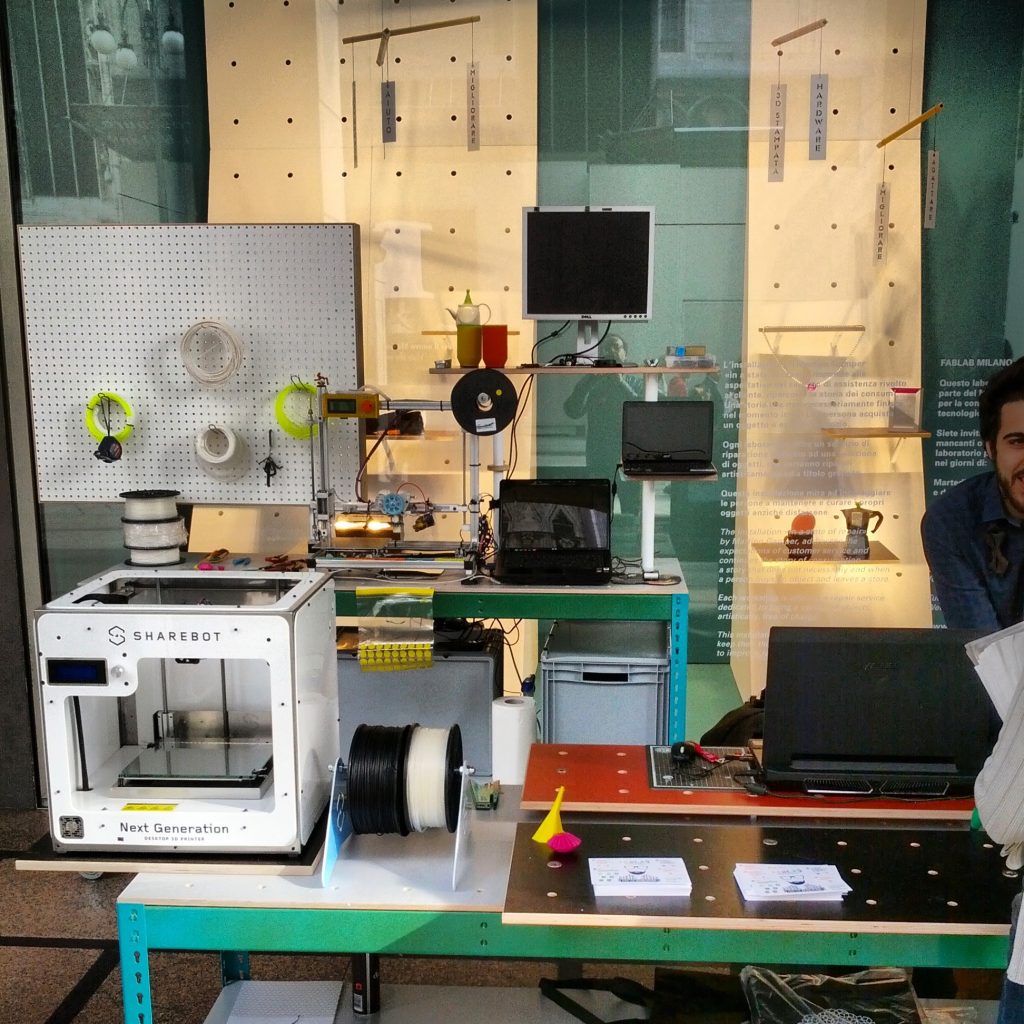
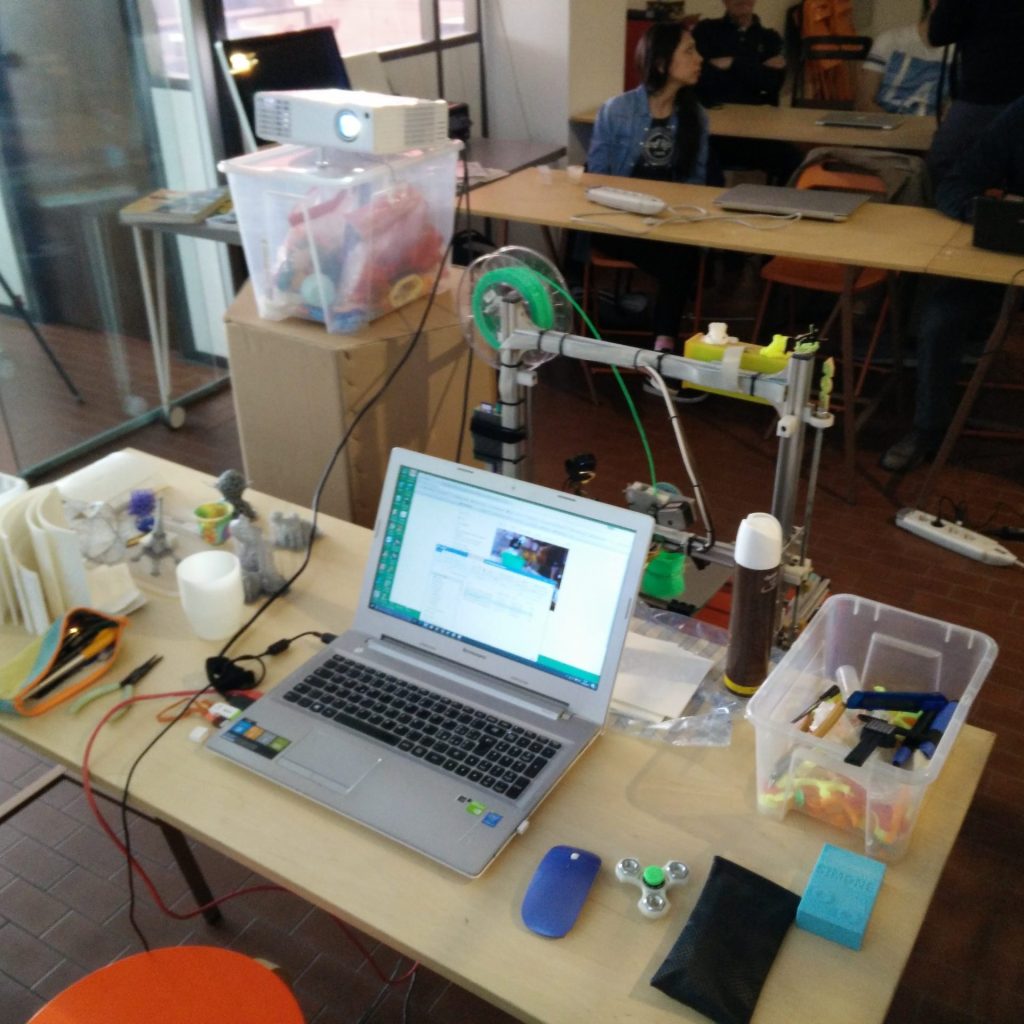
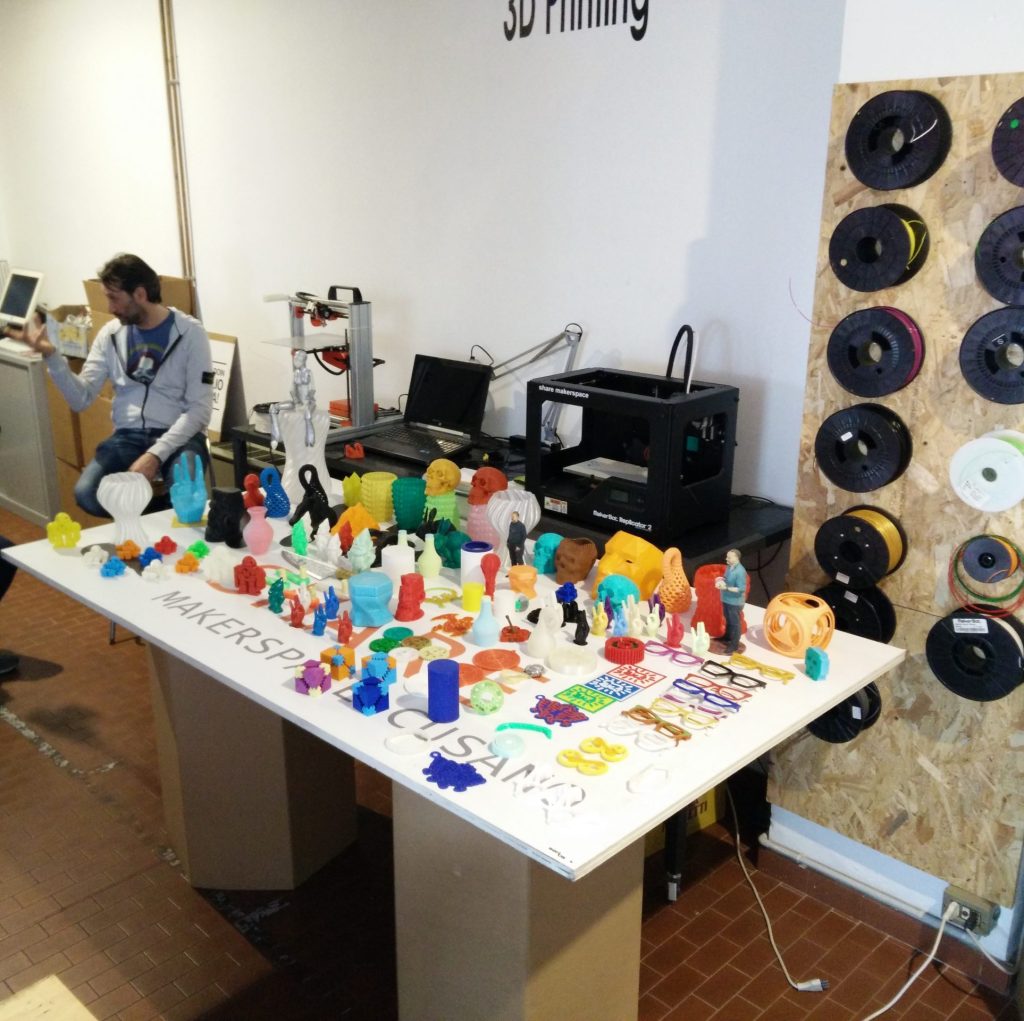
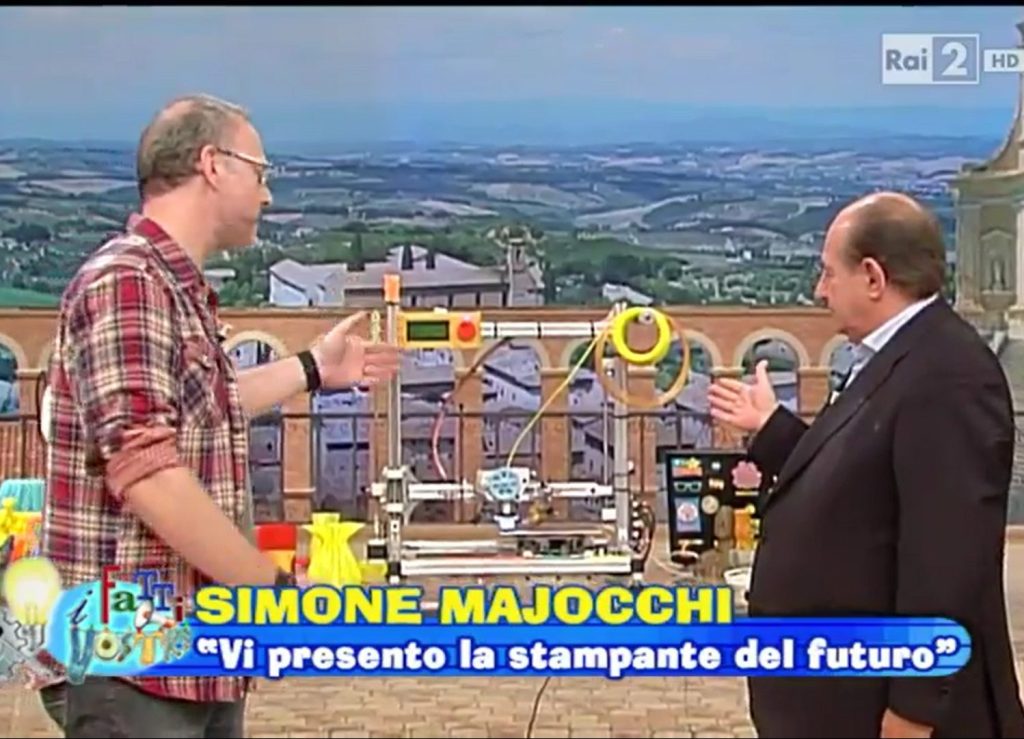
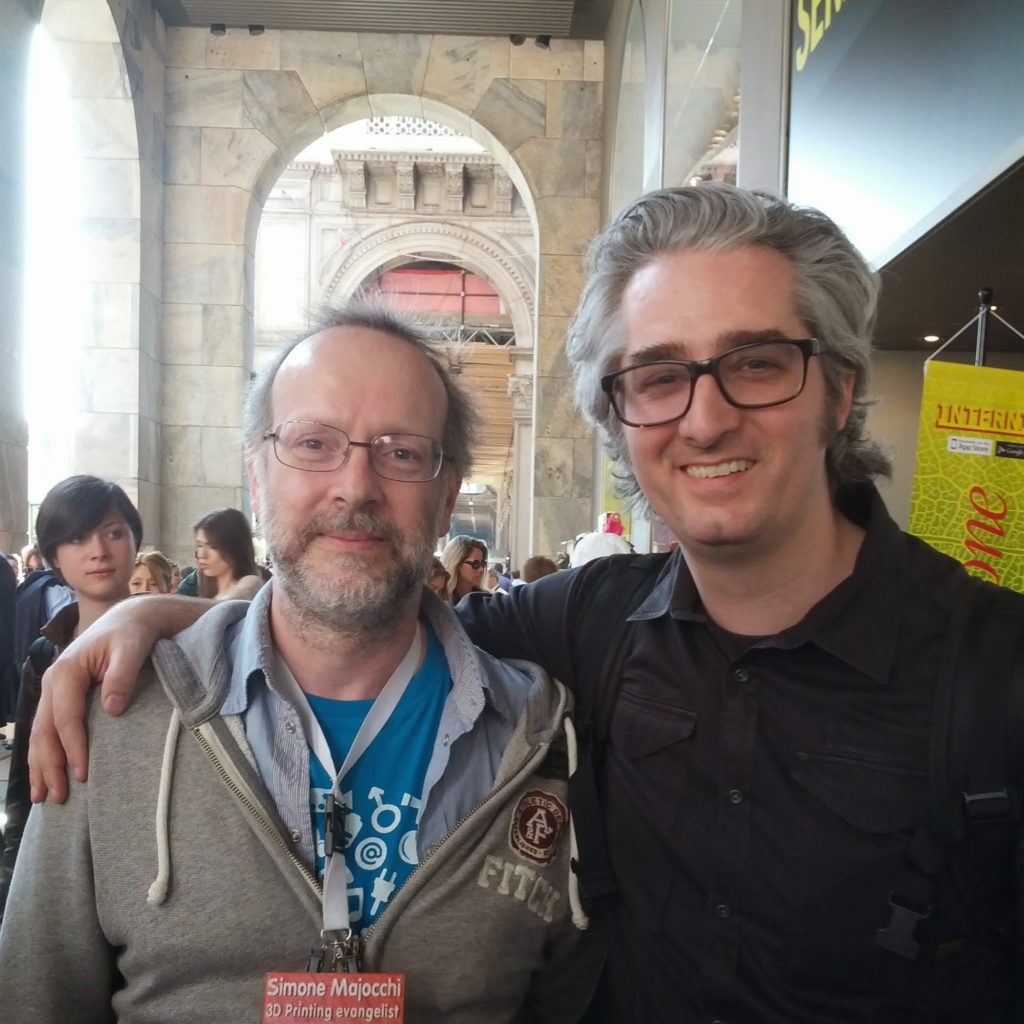
Many years of 3D Printing
